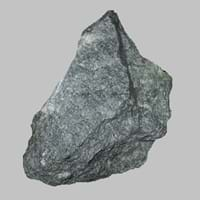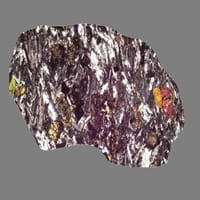Definition
It is a metamorphic magnesium rich rock because it is composed of the mineral talc
Trachyte is a grey fine-grained volcanic rock which mainly consists of alkali feldspar
Discoverer
Unknown
Alexandre Brongniart and René Just Haüy
Etymology
From 17th century, because of its greasy feel and use like a soap
From Greek trakhus rough’ or trakhutēs roughness
Class
Metamorphic Rocks
Igneous Rocks
Sub-Class
Durable Rock, Soft Rock
Durable Rock, Medium Hardness Rock
Group
Not Applicable
Volcanic
Other Categories
Fine Grained Rock, Opaque Rock
Fine Grained Rock, Opaque Rock
Texture
Polished
Aphanitic to Porphyritic
Color
Black, Black to Grey, Green, Grey
Black, Brown, Dark Greenish - Grey, Green, Grey, Light to Dark Grey, White
Durability
Durable
Durable
Appearance
Dull, Banded and Foilated
Banded
Interior Uses
Bathrooms, Decorative Aggregates, Homes, Interior Decoration
Decorative Aggregates, Flooring, Homes, Interior Decoration
Exterior Uses
As Facing Stone, Garden Decoration
As Building Stone, As Facing Stone, Paving Stone, Garden Decoration, Office Buildings
Other Architectural Uses
Curbing
Curbing
Construction Industry
Manufacture of Magnesium and Dolomite Refractories
As Dimension Stone, Building houses or walls, Cement Manufacture, Construction Aggregate, for Road Aggregate, Landscaping, Making natural cement, Manufacture of Magnesium and Dolomite Refractories
Medical Industry
Taken as a Supplement for Calcium or Magnesium
Not Yet Used
Antiquity Uses
Artifacts, Jewellery, Monuments, Sculpture
Artifacts, Monuments, Sculpture, Small Figurines
Commercial Uses
Cemetery Markers, Creating Artwork, Gemstone, Jewelry, Manufacture of Soap, Solvents, Dyes, Plastics and Fibres, Production of Lime, Source of Magnesia (MgO)
Cemetery Markers, Creating Artwork
Types
Not Available
Not Available
Features
Host Rock for Lead
Available in Lots of Colors and Patterns, Is one of the oldest rock, Matrix variable
Archaeological Significance
Famous Monuments
Christ the Redeemer in Rio de Janeiro, Stonehenge in English county of Wiltshire
Data Not Available
Famous Sculptures
Data Not Available
Data Not Available
Formation
Soapstone is a talc-schist, which is a type of metamorphic rock and it is largely composed of the mineral talc and is thus rich inmagnesium.
Trachyte is an igneous volcanic rock with an aphanitic to porphyritic texture. It is the volcanic equivalent of syenite rock and forms as a result of magmatic differentiation.
Mineral Content
Albite, Apatite, Biotite, Calcite, Carbonate, Clay Minerals, Hornblende, Ilmenite, Micas, Plagioclase, Pyroxene, Quartz
Augite, Biotite, Feldspar, Hornblade, Plagioclase, Quartz
Compound Content
CaO, Mg, MgO
Potassium Oxide, Sodium Oxide, Silicon Dioxide
Types of Metamorphism
Burial Metamorphism, Cataclastic Metamorphism, Contact Metamorphism, Hydrothermal Metamorphism, Impact Metamorphism, Regional Metamorphism
Cataclastic Metamorphism, Contact Metamorphism, Regional Metamorphism
Types of Weathering
Not Applicable
Biological Weathering, Chemical Weathering, Mechanical Weathering
Types of Erosion
Not Applicable
Chemical Erosion, Coastal Erosion, Glacier Erosion, Sea Erosion, Water Erosion, Wind Erosion
Grain Size
Fine Grained
Fine Grained
Fracture
Conchoidal
Not Available
Porosity
Less Porous
Less Porous
Cleavage
Perfect
Not Available
Toughness
1
Not Available
Specific Gravity
2.86
2.7
Transparency
Opaque
Opaque
Density
2.8-2.9 g/cm3
2.43-2.45 g/cm3
Specific Heat Capacity
Not Available
Resistance
Heat Resistant, Pressure Resistant
Heat Resistant, Impact Resistant, Wear Resistant
Deposits in Eastern Continents
Asia
China, India, Indonesia, Japan, North Korea, Russia, Saudi Arabia, Singapore, South Korea, Sri Lanka, Tajikistan, Thailand
China, India, Iran, Saudi Arabia, Sri Lanka, Taiwan, Thailand, Turkey, Vietnam
Africa
Egypt, Ethiopia, Ghana, South Africa, Western Africa
Angola, Egypt, Madagascar, Namibia, Nigeria, South Africa
Europe
Austria, England, Finland, France, Germany, Greece, Spain, Sweden, Switzerland, United Kingdom
Bulgaria, England, Germany, Norway, Romania, Switzerland
Others
Not Yet Found
Not Yet Found
Deposits in Western Continents
North America
Canada, USA
USA
South America
Colombia
Brazil, Chile
Deposits in Oceania Continent
Australia
Central Australia, New Zealand, Queensland
New Zealand, Queensland, South Australia, Western Australia
All about Soapstone and Trachyte Properties
Know all about Soapstone and Trachyte properties here. All properties of rocks are important as they define the type of rock and its application. Soapstone belongs to Metamorphic Rocks while Trachyte belongs to Igneous Rocks.Texture of Soapstone is Polished whereas that of Trachyte is Aphanitic to Porphyritic. Soapstone appears Dull, Banded and Foilated and Trachyte appears Banded. The luster of Soapstone is greasy while that of Trachyte is metallic. Soapstone is available in black, black to grey, green, grey colors whereas Trachyte is available in black, brown, dark greenish - grey, green, grey, light to dark grey, white colors. The commercial uses of Soapstone and Trachyte are cemetery markers, creating artwork, gemstone, jewelry, manufacture of soap, solvents, dyes, plastics and fibres, production of lime, source of magnesia (mgo).










